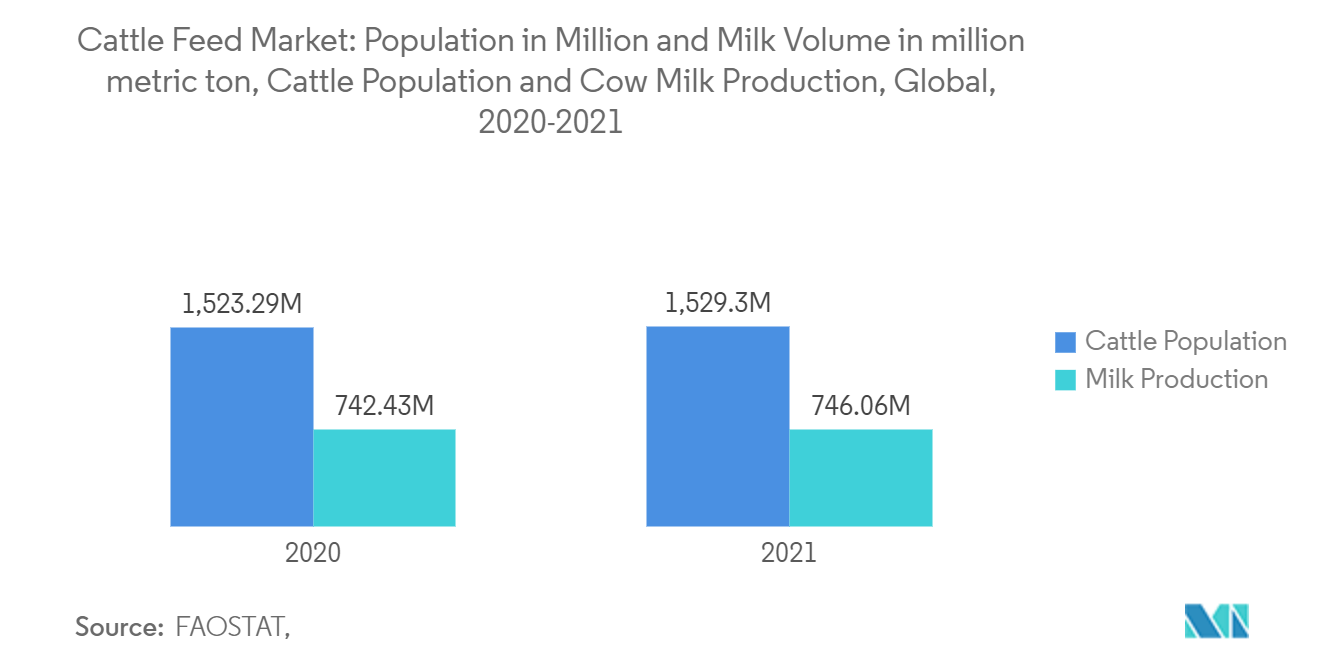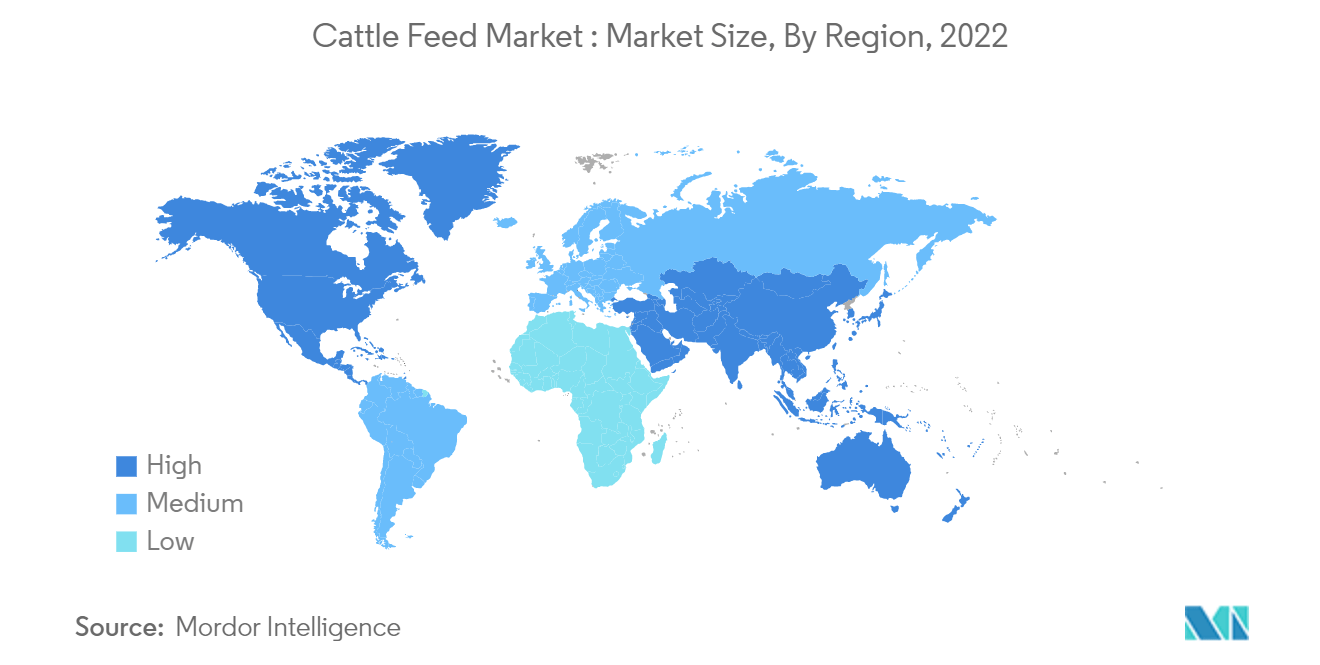Market Trends of Cattle Feed Industry
This section covers the major market trends shaping the Cattle Feed Market according to our research experts:
Increasing Industrialization of Livestock Production in Developing Countries
The increasing population and the need to satisfy the nutritional and taste preferences of the population in developing countries have led to increased industrialization of livestock production. In developing countries, cattle rearing has traditionally been a backyard occupation. However, with increased demand and more awareness regarding the economies of scale of maintaining larger herds, cattle rearing in these countries has started to transform. For instance, according to FAO, the cattle population in India has increased to 193.2 million in 2021 from 191.9 million in 2018. Also, in 2021, India produced 108.3 million metric ton of milk, an increase of 20.6% from 2018.
According to FAO, in land-locked developing countries, cow milk production accounted for 41.9 million metric tons in 2021. Moreover, the cattle population increased to 264.4 million heads in 2021 from 246.3 million heads in 2018. Increased industrialization of cattle husbandry would lead to the adoption of advanced management practices, including the usage of compound feed in appropriate dosages. This is expected to boost the growth of the cattle feed market over the forecast period.

North America Dominates the Global Market
In North America, the cattle population was 140.8 million heads in 2021. The increasing population creates an increasing demand for cattle feed. In North America, the United States is the largest producer of animal feed including cattle feed, and globally, the second largest producer of cattle feed after China due to the significant population and demand of its livestock industry, the United States is one of the largest cattle feed exporters. According to ITC, in 2021, the United States contributed 8.9% of the total feed export. The region is witnessing growth due to a free-trade agreement between the United States, Canada and Mexico as these are the countries which accounted for more than 90% of the feed production in the North America.
The region has many of the global leading animal feed producers. The prominent feed manufacturers in the country include Cargill, Land O'Lakes, Alltech, ADM Alliance Nutrition, Perdue Farms, J.D. Heiskell & Co. Kent Nutrition Group, Hi-Pro Feeds, and Southern States Coop.
Therefore, owing to factors such as free-trade agreement, high cattle population and presence of leading feed manufacturers for exporting and domestic consumption has helped the North America region to be a largest region during the forecasted period.


